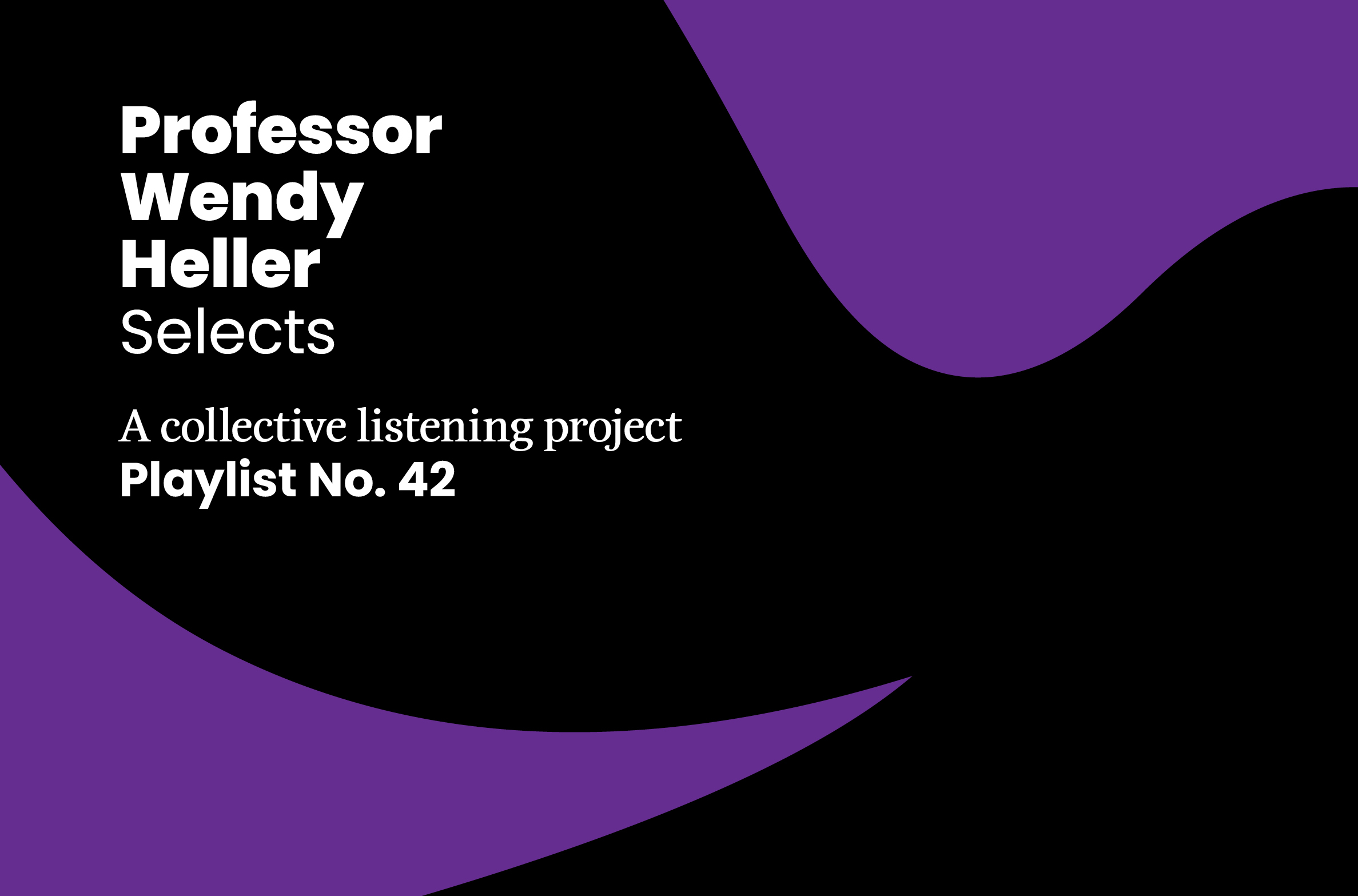Welcome to our 2023-2024 season!
Collective Listening Project
Professor Wendy Heller Selects
Playlist No. 42
About the Playlist
January 28, 2021

Curated by Scheide Professor of Music History Wendy Heller, this week’s installment of our Collective Listening Project celebrates the city of Venice and its carnival, which begins this year on January 30.
Carnival in Early Modern Venice
Although the power of the Most Serene Venetian Republic (697–1797) was on the wane by the late eighteenth century, La Serenissima nonetheless remained famous for her splendid carnival, attracting visitors throughout Europe. Music was an essential part of carnival; with the opening of the first public opera theaters for carnival in 1637, Venice found its signature form of entertainment, although the soundscape of carnival was enhanced by all kinds of music—madrigals, dances, concertos, and cantatas.
It is my hope that this playlist will allow us all to travel to Venice in our imagination—to dream of gondolas and canals, to visualize the gleaming mosaics of San Marco, to picture ourselves strolling through the twisted calle at night or sipping an Aperol Spritz in the Campo San Barnaba.
ADRIAEN WILLAERT “Cingari simo venite a giocare” from Canzone villanesche alla Napolitana
We can only imagine the impression that Venice might have made on the Flemish-born composer Adriaen Willaert (c. 1490–1562), who became maestro di capella at San Marco in 1527, establishing Venice as a major musical center. Although best known for his sacred music, he nonetheless composed a number of lighter songs that would certainly have been appropriate for carnival celebrations. “Cingari simo venite a giocare” was published in Willaert’s Canzone villanesche alla Napolitana (1545). The song features three elements associated with carnival: disguise, courtesans, and gambling. Disguised as gypsies, the protagonists challenge the courtesans to a game called “Queen of Hearts,” proposing to gamble for love. The refrain is particularly suggestive: “This one’s in—that one’s out, it’s more fun when round about” (translation by Donna Cardamone).
ANDREA GABRIELI “Asia felice hor ben posso chiamarmi” from Madrigali et ricercari a quattro voci
The victories of the Venetian Empire at sea were the subject of Andrea Gabrieli’s (1533–1585) “Asia felice hor ben posso chiamarmi,” one of a number of madrigals by this distinguished composer, uncle to Giovanni Gabrieli, who served as organist at San Marco from 1566 until his death in 1585 but also published some secular music. Each of the three strophes of this madrigal for four voices is dedicated to a continent: the first celebrates overcoming the enemies at sea in Asia, the second the fruits, flowers, and fertile souls of the Nile, and the third explicitly glorifies the happiness of Europe as the conqueror of lands that are now under a “true God.” It reminds us that Venice’s carnival may have been pleasurable, but it also had a political function and was central to the way in which the Republic exercised its power throughout the Mediterranean.
CLAUDIO MONTEVERDI
“Su, su, su pastorelli vezzosi” from Madrigali guerrieri et amorosi
“Illustratevi, o cieli” from Il ritorno d’Ulisse in Patria
“Sento un certo non so che” from L’incoronazione di Poppea
“Pur ti miro” from L’incoronazione di Poppea
The next four excerpts are all by the great Claudio Monteverdi (1567–1643), who also served as maestro di capella at San Marco. “Su, su, su pastorelli vezzosi,” from the Madrigali guerrieri et amorosi (1638) is a light-hearted, lively canzonetta for three voices that celebrates pastoral pleasures, invoking the shepherds (strophe one), the songbirds (strophe two), and the chattering brooks (strophe 3) to rejoice. Monteverdi’s Il ritorno d’Ulisse in Patria (1640), one of his two surviving Venetian operas, would also have been seen during carnival. Like all Venetian operas, it ends happily; in Act I, scene 10 “Illustratevi, o cieli,” we hear Penelope burst into florid song for the first time in the entire opera, as she celebrates the return of her long absent husband Ulysses. Roman history becomes part of the carnival in Monteverdi’s final opera, L’incoronazione di Poppea (1643). While Nero and Poppea may be on somewhat shaky moral grounds, the music unambiguously celebrates the pleasures of sensual love, including here in the charming brief duet (“Sento un certo non so che”) between the two young servants, Valleto and Damigella that (shockingly) follows directly upon the suicide of Seneca. And no one can resist the duet that ends the opera, “Pur ti miro,” likely written after Monteverdi’s death.
FRANCESCO CAVALLI “Cor mio che vuoi tu?” from La Calisto
Monteverdi’s young colleague and former student Francesco Cavalli (1602–1676) would captivate opera audiences throughout the Italian peninsula with his lush lyricism and keen dramatic sense. This passionate aria, “Cor mio che vuoi tu?” from Act II, scene 9 of La Calisto (1651) is sung by the shepherd-astronomer Endimone, as he expresses his desire for the moon goddess Diana, on whom he gazes each night. We hope this will also entice you to watch our soon-to-be released virtual production of the opera by Princeton University Opera Theater, directed by Michael Pratt and Christopher Mattaliano.
GEORGE FRIDERIC HANDEL “L’alma mia fra le tempeste” from Agrippina
The twenty-four year-old Handel (1685–1759) followed in Monteverdi’s footsteps in 1709, when his Agrippina—another opera mocking the misdeeds of the Julio-Claudian emperors—premiered at Venice’s luxurious Teatro San Giovanni Grisostomo on December 26, 1709, the first day of carnival. I have chosen Agrippina’s aria “L’alma mia fra le tempeste,” from Act I, scene 6, in which Agrippina, plotting to put her son Nero on the throne, states her determination to succeed: able to withstand the tempest, her soul hopes to reach its port; she is armed with constancy and as long as she can see the shore, even the worst storms provide her with comfort. Handel brilliantly intertwines the voice with the oboe, as the florid singing captures Agrippina’s fierce determination to weather whatever storm comes her way. In this excerpt, we hear PUC-favorite Joyce DiDonato, whose performance of this role was one of the highlights of last year’s abbreviated Metropolitan Opera season.
ANTONIO VIVALDI
Concerto No. 4 in F Minor, Op. 8, RV 297, L’inverno (Winter)
Concerto No. 1 in E Major, Op. 8, RV 269, La primavera (Spring)
For our final set, we leave the world of opera and turn to two excerpts from one of the best-known works by a Venetian composer, Vivaldi’s Le quattro stagioni. While not carnival compositions per se, Vivaldi (1678–1741) invokes the chill of winter that marked the carnival experience in the Concerto in F Minor, RV 297 (“Winter”) particularly the dissonant opening movement, where we can hear the cracking of the ice in the canals. I include here as well RV 269 (“Spring”). Vivaldi may have placed “Winter” at the end of this set, however our playlist ends with “Spring,” as we look forward to the end of this very difficult winter, the coming of warm weather, and the end of the pandemic.



